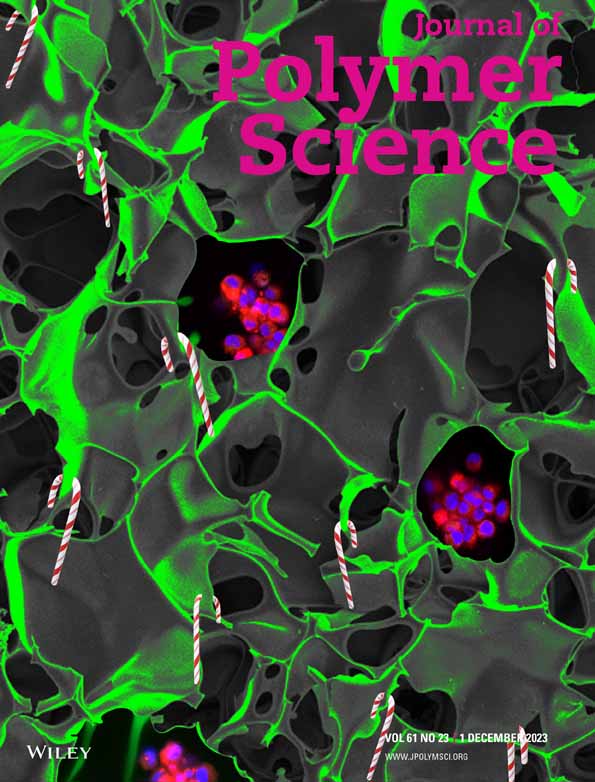RAFT emulsion polymerization of methyl methacrylate mediated by protonated poly(2-(dimethylamino)ethyl methacrylate) macromolecular chain transfer agent: A mechanism study
Abstract
Surfactant-free reversible addition-fragmentation transfer (RAFT)-mediated emulsion polymerization has been used in the synthesis of latex particles. Although this method has been developed for some time, some detailed mechanisms are not clear. Herein, RAFT emulsion polymerization of methyl methacrylate (MMA) mediated by protonated poly(2-(dimethylamino)ethyl methacrylate) (H+-PDMAEMA) macromolecular chain transfer agent (macro-CTA) is studied. The effects of the molar ratios of MMA/macro-CTA and initiator/macro-CTA, and the macro-CTA chain length on the emulsion polymerizations are investigated. At the nucleation stage, H+-PDMAEMA-CTA is chain extended with MMA dissolved in aqueous phase; and when the length of PMMA block is above a critical length, the formed amphiphilic block copolymer (BCP) chains self-assemble into micellar particles. The nucleation time in the emulsion polymerization is strongly dependent on the chain length of H+-PDMAEMA-CTA, and the molar ratio of free radical initiator/macro-CTA. The emulsion polymerization rate is in direct proportion to the molar ratio of free radical initiator/macro-CTA. The size and the size distribution of the latex particles can be tuned through control of the macro-CTA chain length and MMA/macro-CTA molar ratio. Monodispersed latex particles can be synthesized under proper conditions. It is expected that well-defined latex particles with a variety of hydrophilic polymers (or biomacromolecules) on the surfaces can be synthesized by this approach.
Graphical Abstract
CONFLICT OF INTEREST STATEMENT
The authors declare no conflict of interest.





